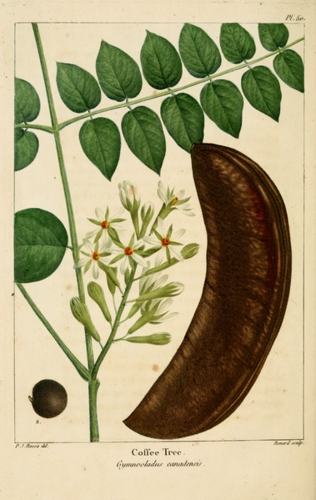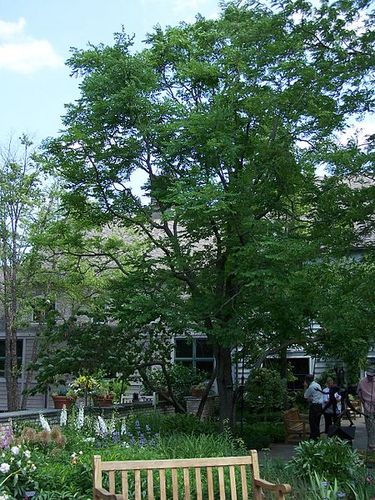Kentucky Coffeetree : Cultural Significance
Many old growths of the Coffeetree correspond with the sites of ancient Native American settlements. The inner bark was prepared as a tea, tonic or snack and used to relieve headaches by the Omaha people. Among other ethnic groups, it was also used as a cure for hemorrhaging, kidney failure and labor pains. Unprepared, the seeds were dumped into rivers to stun fish. Among at least 130 tribal groups throughout the region, the seeds were used in a commonly played dice game. The preparation of the seeds for use in this game also created favorable conditions for germination; through this use, Native Americans may be responsible the presence of old stands of the tree at ancient settlements and isolated growths far outside its normal range.
The roasted seeds were used by colonial settlers as a substitute for coffee beans; this use has given the tree its most common name. The resultant drink was more bitter than true coffee, and colonists only drank it in times of poverty and hardship when coffee was unavailable. This coupled with the toxicity of the seeds and the “dead” appearance of the tree for half the year lead to the use of colloquial names including “Dead Tree” and a generally unfavorable reputation until Thomas Jefferson planted the first specimens in Virginia as part of his Monticello Estate (for reasons no longer known). From 1976 to 1994, it was the state tree of Kentucky (it has since been replaced by the Tulip Poplar), and its wood is sometimes used to make cabinets and furniture, but otherwise the tree is best known today for its rarity and unusual natural history.


